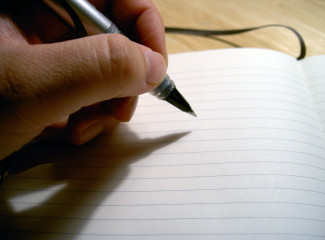Authors sometimes ask me, their editor, how to write a book glossary for their nonfiction manuscript. The first step is to make a list of all the technical or trade terms that come to mind off the top of your head that you want your reader to learn and remember. Expand this list by going through the book after it is written and extracting important terms you may have missed.
Let Your Editor Help
It is usually easier to begin the list yourself, then let your book editor finish it. She will be reading the book anyway, and it’s not much extra work for her to copy and paste important terms as she finds them onto the growing glossary page.
Once a term is selected, you’ll need a definition. You can write this, or your editor can craft a definition based on what she reads in your book. You can then view her words and revise them as necessary. Since you, not the editor, are the subject-matter expert, you have final say on when a definition is accurate and adequate.
Don’t Sound Like a Dictionary
It’s fine to include an example for clarity–not okay to lift a definition out of the dictionary. Put it in your own words, and don’t attach things like “noun” or pronunciation clues to the word the way the dictionary does. A glossary requires both more and less: a more fluent (less choppy) explanation of the term than the dictionary provides, with fewer appendages.
And don’t try to define every meaning of the term, the way the dictionary would. Just define (explain) the meaning of the term as the term is used in your book.
Avoid Defining Terms with Terms
Try not to use other technical terms in defining a term. That only makes it harder for your reader. Explain the concept in as simple terms as possible. Try to use words a high school student with no knowledge of the subject would understand.
Alphabetize Carefully
Once you’ve compiled your list and created your definitions, next you’ll need to alphabetize your terms. Your editor can take care of that if you don’t wish to do it yourself. Alphabetizing can be tricky, so your editor will carefully double-check that no terms are out of place. She will also tell you if a definition sounds too difficult and, when needed, help you simplify it for clarity.
Italicize the Term
When the glossary is finished, place it in the back of the book, after any appendices but before the bibliography and index if there are any. Italicize each term so it stands out from its definition, and also bold the term, if you wish. At the top of the entire list, write “Glossary.”
 That’s the skinny on how to write a book glossary for a nonfiction book. Not hard to do, but a whole lot of help for your readers if your book introduces more than a few trade or technical terms. Your readers will thank you for making their read easier, and your book will be the better for it.
That’s the skinny on how to write a book glossary for a nonfiction book. Not hard to do, but a whole lot of help for your readers if your book introduces more than a few trade or technical terms. Your readers will thank you for making their read easier, and your book will be the better for it.
Jessi Rita Hoffman … book editing by an industry professional
